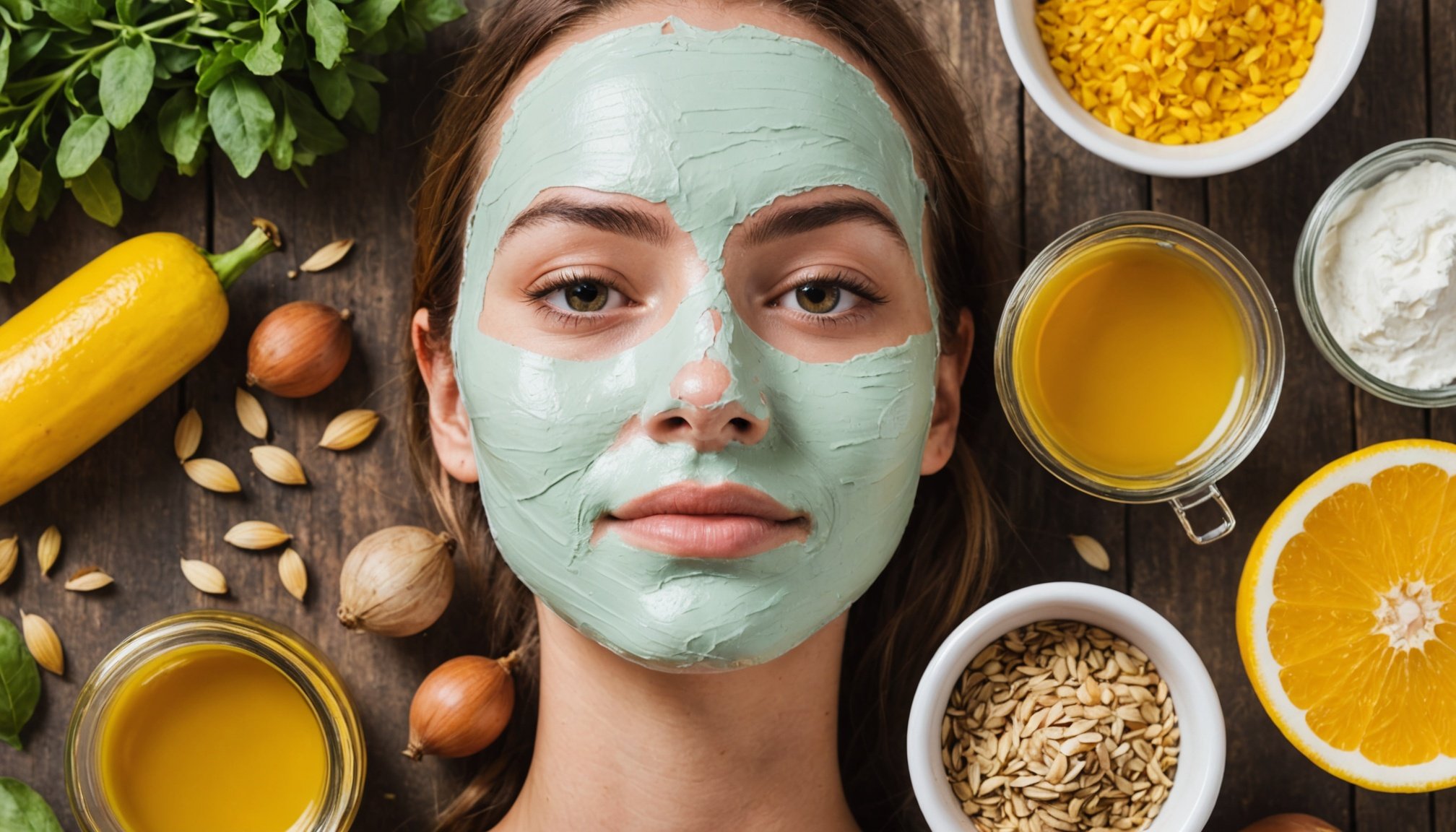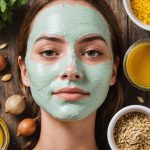Overview of Oily Skin Management
Managing oily skin can be challenging, but DIY skincare solutions offer promising avenues. Oily skin results from overactive sebaceous glands producing excess sebum. This can lead to clogged pores and blemishes. Understanding oily skin is crucial to address its causes effectively. Factors such as genetics, diet, and humidity can exacerbate oiliness, making it essential to tailor skincare routines accordingly.
Using natural remedies is beneficial as they tend to be gentler on the skin. Ingredients like honey, yogurt, and oatmeal present in DIY face masks can balance oil production without causing irritation. These DIY skincare methods provide a cost-effective solution, reducing reliance on commercial products that often contain harsh chemicals.
In the same genre : Unleash Your Inner Strength: Custom Home Workout Plans Tailored for Every Woman’s Fitness Journey
DIY face masks harness the power of natural ingredients to detoxify, reduce shininess, and soothe the skin. The benefits of DIY face masks for oily skin are significant, including the use of familiar household items that simplify the skincare process. Adjusting frequency in application can maximize their effectiveness while maintaining skin health. Regular use of these masks can help achieve a clearer complexion, improving skin texture and tone. Encouraging readers to explore these solutions fosters an empowering approach to skincare.
Essential Ingredients for DIY Face Masks
Many skincare ingredients are readily available in your home, offering a natural alternative to harsh chemical products. Popular face mask components include honey, yogurt, and oatmeal. Here’s a closer look at how they benefit oily skin.
In parallel : Unleash Your Inner Strength: Custom Home Workout Plans Tailored for Every Woman’s Fitness Journey
Honey
Honey is a superstar in the realm of oily skin solutions. It acts as a natural humectant, drawing moisture to the skin while helping to balance oiliness. Its antibacterial properties can also reduce the appearance of blemishes. For those with oily skin, honey is both a soothing and purifying agent.
Yogurt
Yogurt is an excellent choice for those seeking to control excessive oiliness. Rich in lactic acid, it gently exfoliates the skin, helping to remove dead skin cells and unclog pores. Incorporating yogurt into your skincare recipes may leave the skin feeling refreshed and less greasy.
Oatmeal
As a soothing agent, oatmeal calms irritated skin while effectively absorbing excess oil. It’s perfect for DIY enthusiasts wanting a versatile ingredient that’s gentle yet effective. Oatmeal’s texture provides mild exfoliation, promoting a cleaner, more matte complexion. Combining these common kitchen ingredients can transform them into effective DIY face masks for managing oily skin.
DIY Face Mask Recipes for Oily Skin
Creating your own DIY face masks offers effective oily skin remedies. Let’s explore some simple skincare recipes.
Honey and Lemon Mask
This mask combines the humectant properties of honey with the astringent quality of lemon. Honey hydrates, while lemon helps to tighten pores and reduce shininess. Mix one tablespoon of honey with a few drops of lemon juice, apply to the face, and leave for 10-15 minutes. Use once a week to see benefits.
Yogurt and Oatmeal Mask
Feel refreshed with a Yogurt and Oatmeal Mask. The lactic acid in yogurt exfoliates while oatmeal absorbs excess oil. Blend two tablespoons of yogurt with a tablespoon of oatmeal. Apply evenly across the skin and relax for 15 minutes. Twice weekly application can minimize oiliness and soothe skin.
Egg White and Clay Mask
Egg whites tighten the skin, while clay absorbs impurities. Whisk an egg white with a tablespoon of cosmetic clay into a paste. Smooth onto your face, avoiding the eyes, and let it set for 10 minutes. Once dry, rinse thoroughly. For best results, this efficient oily skin solution should be used bi-weekly.
Tips for Applying DIY Face Masks
When it comes to face mask application, following a few skincare tips can enhance the benefits you reap. Firstly, ensure your skin is thoroughly cleansed before applying any mask. This step removes impurities, allowing the active ingredients to penetrate deeply. Use warm water and a gentle cleanser suited for your skin type.
Once your skin is prepped, it’s important to apply the mask evenly. You can use clean fingers or an applicator brush, ensuring a uniform layer. Be cautious to avoid sensitive areas such as the eyes and mouth. Mask usage should ideally be comfortable and not overly tight on the skin.
As for the recommended duration, most DIY masks generally work best within a timeframe of 10 to 15 minutes. Pay close attention to any tingling sensations, as this might indicate irritation, prompting you to rinse off earlier. Rinse with lukewarm water for a fresh finish.
Adhering to these practices not only optimizes the mask’s effectiveness, but also helps in maintaining skin health. A structured approach to mask application means you support both the immediate glow and the long-term clarity of your skin.
Precautions and Considerations
Taking proper skin precautions is vital when introducing DIY skincare into your routine. To prevent allergic reactions, always begin with a patch test. This involves applying a small amount of the mask on a discreet part of your skin — typically the inner forearm — and waiting for 24 hours. This allows you to identify any sensitivity to the ingredients before applying them to your face.
Understanding one’s skin sensitivity is crucial. If you notice redness, itching, or irritation during the patch test, it is best to avoid using the mask on your face. Each individual’s skin can react differently, even to natural remedies, hence being observant and cautious is important.
Proper storage of DIY masks ensures effectiveness. Freshly prepared masks should ideally be used immediately, but if you must store, keep them in an airtight container in the fridge for no longer than a week. This prevents the ingredients from degrading, which could otherwise impact their efficacy and safety.
Adhering to these safety tips can enhance your experience with DIY skincare, allowing you to embrace the benefits while minimizing risks. Taking these steps ensures a safe and enjoyable journey to achieving healthier skin.
Additional Skincare Tips for Oily Skin
Beyond DIY face masks, maintaining a consistent oily skin care routine is vital. Your journey begins with a robust daily cleansing regimen. Choose a gentle, oil-free cleanser to prevent clogging pores. Washing twice a day can help control oil production without stripping skin of necessary moisture.
Hydration plays a key role in holistic skincare. Oily skin requires hydration as much as any other skin type. Opt for light, non-comedogenic moisturisers that won’t clog pores. Ingredients like hyaluronic acid can maintain hydration levels without promoting oiliness.
Incorporating exfoliation is an excellent way to manage oily skin. Exfoliating 2-3 times per week helps remove dead skin cells that may contribute to oil build-up. However, be cautious—excessive exfoliation can lead to increased oil production. Always choose gentle exfoliants and follow with a soothing moisturizer.
Finally, consider skincare products that include salicylic acid or charcoal for their oil-absorbing properties. By combining these additional skincare tips with your DIY treatments, you can achieve a balanced routine that supports your pursuit of clear, healthy skin. Stay attentive to your











